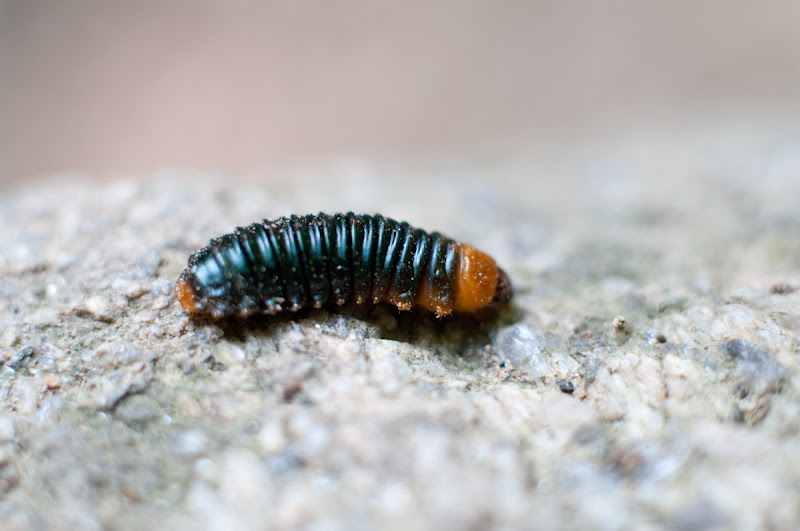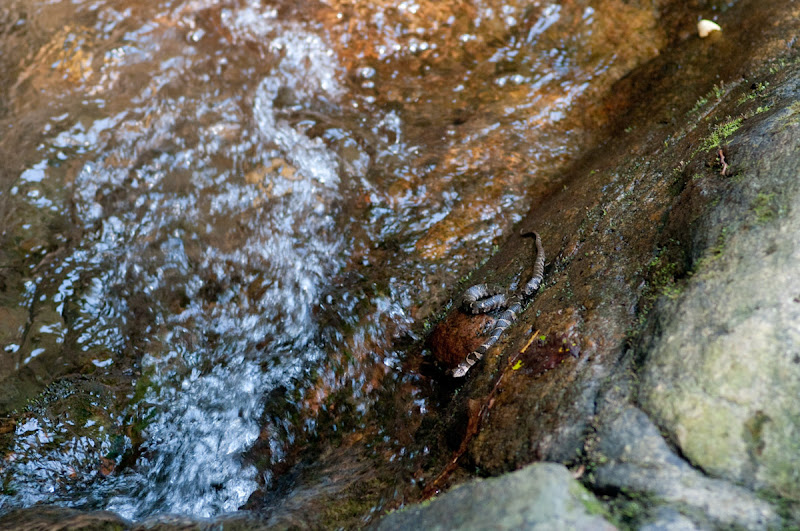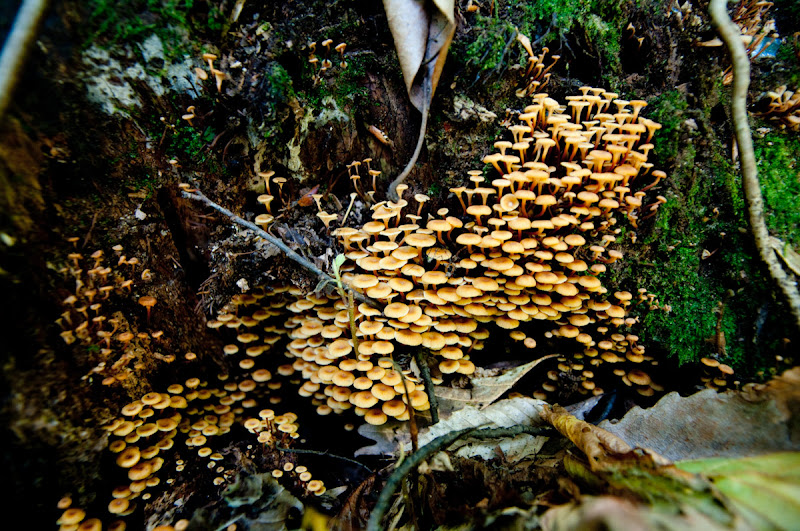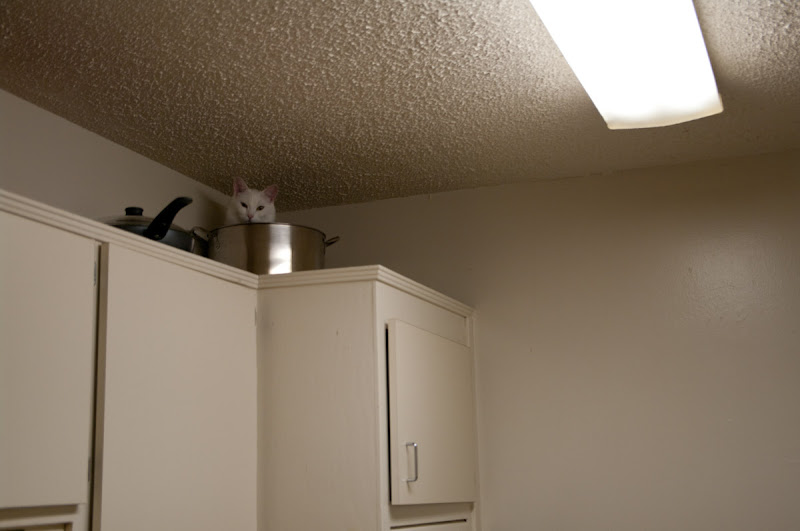



The album is here, of course.
There's patapsco valley (duh) as well as a few things around the house, to include the new Blendtec blender. It obliterated a strawberry. I apologize for how loud this is; my phone didn't like me talking at it in the kitchen.
It also makes a damn fine smoothie, for what it's worth, and it's automated enough to do that without any additional input.
Good eye on those fungi. I rarely find groups of mushrooms that attractive. Would have made an awesome 4x5 with all that small detail.
ReplyDeleteI'm toying with using a lser printer transparency Bayer filter printout over a sheet of B&W film, to create a crude color image ala autochrome. Totally pointless, but with this heat I don't have much else to do.
first shot needs to not be a bug, second one needs much more or less shutter speed, just because. not like my opinion counts for anything.
ReplyDeletefound out today that the 1945 vintage shutter curtains on the IIIck are indeed light-tight - other than the top 2 speeds effective being '0', it works VERY well, amazingly enuff. even got a few really good shots of the dog on the test roll.
-GMT
It's a baby bug, doesn't that count for something?
ReplyDeleteThey were ALL OVER THE PLACE at cascade falls, it's silly.
I am inclined to agree about the snake picture, but I wanted to make sure the snake was sharp. I could always photoshop it to make it look blurry in the water, then I'll be a fraud. Wink!
Josh - you must try that because i bet it could turn out to be very cool.
GMT - true story, I just watched the original cut of A New Hope yesterday. I need to get my MX checked out and probably refoamed around the mirror at some point in the near future. The foam nearest the lens mount has seen far better days, but it's not a very good reason to throw out the camera. And remember - 0 is just perfectly light tight.
Nat,
ReplyDeleteAs soon as my Ilford delta 100 shows up from Adorama I will. I had to acquire film that DR5 can reverse to a positive for the first test. Once I know it works I'll experiment with making negatives, to avoid having to send the film out. I'm not equipped for making positives from bw here at home.
Right now i'm struggling with the nightmare that is scanning kodachrome. On my scanner all the images are blue, dark, and fuzzy. If I put them in front of my macro lens or look at them with an eyeball they look fine. Sigh.
original cut? that would be a good thing, right?
ReplyDeleteand no, even if there are lots of them, bugs are a crap subject. again, just my opinion, and it obviously differs from that of the generation of small children who make their parents pay to take them to see movies about bugs.
the MX should be easy - I've replaced foam on some ridiculous variety of cameras with no problems, worst of it is usually getting the old stuff off it's it's gotten to the point of turning gummy.
agreed on the perfectly light tight part tho - looks like that camera will end up in the honds of someone who plans to restore it. that means some fundage coming my way, so it's time to shop around and see just how worthy it might be to have rangefinder and viewfinder in the same window...
-GMT
Well, the film hasn't shown up, so this experiment will probably wait unit next weekend, but I was able to procure laser transparencies and print a test Bayer filter. Good thing Staples was willing to sell blank transparencies per sheet in the copy center, albeit as copies for sales purposes.
ReplyDeleteI printed it on my Dell 3000cn, which is a not horrible color laser printer, but which has a penchant for streaking. There are so streaks, but the resulting filter should be serviceable. It appears gray from eyeball focus range, as I'm told such a filter should, and the pattern is only just large enough to look like stiching on my macro lens at 1:1. It results in about a .75 stop light decrease on the macro, no clue what that will translate to against the film. My only concern, other than the streaking, is the clarity of the plastic itself. It is not 100 clear, having a very slight texture, and some machine marked.
I added some pin registration like features in the form of black and white crosses to allow me to align the slide with the filter after processing. Otherwise the colors wouldn't match up correctly.
I'd test it with a negative process on some film I have right now, but I'm not sure if the colors will properly invert. I'm also not confident it will scan, considering the light decrease. Then again, it might not work. However, Ive read they used to do this as a trick at Kodak workshops.
It it works, I'll have a flimsy Dufaycolor like color system, albeit with much less in terms of individual color dots.
Good news on the kodachrome... Although my Canon Twain driver does not support custom color profiles, and the scanner is not supported in 64 bit for either vuescan or silver fast, which do support custom profiles, I was able to find one of the Canon profiles which works a lot better than the auto tone. If you get to shoot some kodachrome before the end, just keep in mind it may need some additional work to scan.
ReplyDeleteMore good news. I tested the bayer filter over some of the Kodachrome I am scanning.
ReplyDeleteAlthough obviously the Kodachrome is color film, so there is no real point to the exercise, I was able to determine that the filter DOES indeed pass enough light through for a successful scan, which means it should also work for a successful image. It looks like some deliberate overexposure might be required for scanning to work properly, but I'm confident it is possible.
The grid is very big even when scanned at 300dpi, too big for 35mm film. I sould have guessed that, since 600dpi on a printer actually means signficantly less in color. However, since I'm not 100% confident the filter will even register on the film at the time of exposure, big seems like a good bet. A possible next step would be to use an inkjet transparency. However, they use a water soluable "glue" to bind the ink to the sheet, which would preclude a future step I'm considering in my experimentation, printing the pattern on a transparancy and then applying liquid emulsion to it, or printing directly onto the back side of B&W film, to avoid the pin registration issue.
We'll see how it works once the film shows up. Wish I had known DR5 cannot reverse process the film I have at home when I was making an order for film from Adorama LAST weekend.
Oh, and I managed to locate a polarizer for my Pacemaker, in the form of a Series VII filter. I have a Series VI to VII converter on the way, and I already own the push-on holder for Series VI. My plan is to finally get the Pacemaker out for some waterfall photography on Labor Day weekend.
Speaking of bugs... Found what I think was a Brown Recluse in my apartment yesterday. I'll be stocking up on spray...
- Josh
josh -
ReplyDeletebrown recluse= bad. friend who's visiting next weekend has seen several down south where he's living these days.
sounds like you've got a couple good projects going. mine is still the camera collection cleanout, hopefully followed by seeing if i can do color print stuff at home in addition to black and white. could be fun?
as for the series filters, how's this for annoying - after not having any for a decade, it seems i'll have something that uses Series 5.5's sometime this week. fortunately, it comes with a UVA, and I can use that to make an adapter to E39 should i care.
more importantly, tho it's not an M body, i'll have a cheap old camera with an M mount and a meter! selling the IIIck to make it happen, but this get me down to 3 cameras, 2 with meters, 2 of which can (mostly) share lenses.
-GMT